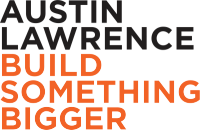Not all marketing-generated leads are created equal.
For the purpose of discussing lead nurturing, I’ve divided B2B SaaS companies into three unit-of-sale categories: under $3000 per year, $3,000 to $25,000 per year and $25,000 to a few hundred thousand dollars or more (the enterprise sale). These distinctions seem arbitrary but in fact are real, and have a dramatic impact on lead generation and qualification. This post talks about the middle and upper price points. If you want to read about lead nurturing for SaaS products, check out my blog here.
If your SaaS software is a midrange unit of sale, there’s likely a longer buyer’s journey to support and a lot of your top-of-funnel (ToFu) leads will never go further – unless you nurture them effectively. These prospects might have downloaded a checklist or watched a webinar, so they’re unlikely to be ready to talk to sales. The advice here is to send deeper documents along the same line as what’s already expressed as an interest. A checklist could be followed-up by an email offer of an eBook or guide (you should also offer this on the “thank you page” of the ToFu conversion). The nurture track can include blog updates to keep engagement up. It’s also a good idea to take the recipient’s temperature a few weeks later with an email that asks what most interests them (this can also drive content creation or inform additional content you send them). All ToFu and MoFu (middle-of-funnel) offers that are contextually relevant to your progressively profiled contact record can go to these prospects. For example, if they visit a website page about cost savings, you may want to send an ROI calculator, furthering the conversation in a way that is meaningful to the buyer’s unique journey - and this same ROI calc could be offered on the web page, providing more than one impression of the CTA.
Somewhat complex / mid priced SaaS products have longer sales cycles of three to as much as six months or more, so you need to plan a journey that supports that process after sales is engaged. Here again, marketing automation can take you from talking to a lead to engaging with a real prospect in meaningful ways. A good example of such intra-sales engagement would be an on-demand webinar that’s designed to help active prospects understand what it’s like to actually live with the solution and what outcomes can be achieved. This kind of content might or might not be offered to the general public. Another tact to take could be a self-service and customized demo like that of the former DemoChimp, now known as Consensus. This tool provides awesome analytics on what interests the prospect most and can shorten sales cycles.
For businesses with revenues of $20- $30 million and up, your nurture tools include annual customer events, road shows and other tactics that can make prospects feel special; you just have to do it at scale to be cost effective. Additional BoFu offers include cost-savings and ROI calculators, and the more interactive, the better (you can still capture contact information for sales). We’ve seen ROI calculators built by analyst firms like Forrester, along with white papers and “risk mitigation” materials like implementation guides to make complex propositions and associated financial decisions easier to manage and justify.
The enterprise sale, greater than $25,000 per year to as much as a few hundred thousand or more annually, requires the most sophisticated lead nurturing of all. As the price tag goes up, it becomes more likely that you and your prospective customers know each other, and lead nurturing starts to look like account-based marketing. That said, it remains valuable to drive site visitors to the website and through a nurture journey, as many enterprise teams cannot cover their territories in detail, and also your reps can’t know everyone at every account. This aspect of the marketing mandate is more of a support role to sales than at smaller firms where content marketing can be much or nearly all of the marketing footprint (enterprise SaaS CMOs will have a wide range of responsibilities and tools at their disposal that don’t exist in small firms and are barely touched upon in most entrepreneur-scale firms of $20- $30 million or so in revenue).
Enterprise lead nurture includes everything you’d do for mid price solutions, and then some. You should consider roadshows and bespoke events like “innovation days,” that bring your top talent together with your executive sponsors at the client in a small group setting. Bringing clients to your sponsored sporting events (e.g., US Open, F1 racing, NASCAR) makes a huge impression, though you must be mindful of your company’s and your clients’ rules on gifts. When you are asked to bid on a RFP, consider adding what we call a “pursuit package” of custom video, prospect-specific portals and content, and enhanced PPTs on top of the mandatory response. You can read more about how we help enterprises increase their RFP advantage here.. Additional resources to help your champion rationalize a decision (and great nurturing content) are analyst reports that are either syndicated and cover an industry segment (e.g., Gartner, Forrester) or custom reports from these or other lesser-known analysts. Having these analysts at your webinars or in-person events also greatly enhances attendance and impact.
As you build more landing pages and chat dialogs that convert, the pace of lead generation will accelerate. Having a solid lead scoring rubric in place will help prioritize which leads sales should pounce on, and which are best left to marketing to nurture, though if your website lead generation efforts are early-stage, you might want to have sales call all marketing-generated leads to assess value and provide you with feedback essential to lead scoring. You can read our introductory blog on lead scoring here, or reach out for a complimentary 30-minute consultation on the lead management topic of your choice.







